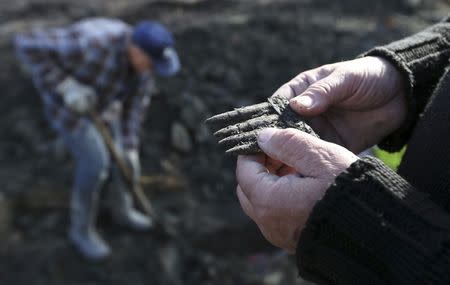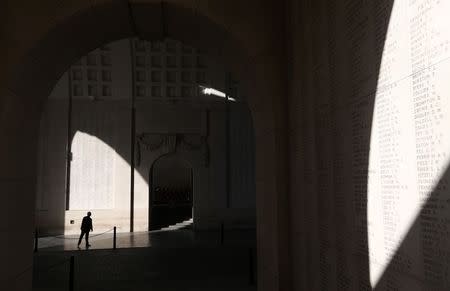World War One bombs a part of life in Belgium even 100 years on
By Philip Blenkinsop YPRES Belgium (Reuters) - Pondfarm in western Belgium is used to digging up an unusual crop. "It's a fairly poor harvest," said Stijn Butaye, 26, as he looked at a haul of 28 World War One shells unearthed with potatoes and beet in the last two weeks and awaiting collection by Belgium's bomb disposal squad. The 40-hectare (100 acre) Butaye family farm sits where - 100 years ago - advancing German forces pounded British lines, eventually setting up a base with a hospital and an aid station in two large fortified bunkers. Belgian farmers who returned to the muddied battlefields after the war mostly just filled in the trenches and got back to work. Butaye's grandfather sought in the 1960s to blow up the German bunkers he despised, but Butaye himself has developed such a love for war memorabilia he has unearthed over the past decade that he has set up his own museum. It is quite a haul: dozens of bottles, shells, two British rifles, a helmet and, at the entrance, the end section of an early British tank with metal tread and a book signed by visitors from as far away as Canada, South Africa and Australia. "It is a hobby that has got a bit out of hand," confesses Butaye. Centenary commemorations this year have spiked international interest particularly in the Ypres area, which saw some of the heaviest fighting and is now dotted with war cemeteries. Some 65 million soldiers mobilized for the Great War, around 9 million were killed, 20 million injured and nearly 7 million taken prisoner. Belgium will hold ceremonies on Oct. 28 to mark the 100th anniversary of the First Battle of Ypres and the flooding of the Yser plain at Nieuwpoort - events that blocked the German advance and set up almost four years of trench warfare. POST-WAR FATALITIES Local farmers have been ploughing the fields for generations, but bombs keep coming up, partly because the act of ploughing breaks up the soil and then because, in winter, ice formed around a metal object also nudges it higher. Butaye says the harsher the winter, the larger the haul of shells and other war relics over the subsequent season. More organized discoveries of World War One artifacts in Belgium have surged in the past decade, prompted by a 2004 change in the law requiring companies carrying out construction or infrastructure work to pay for any archaeological investigation required at their site. According to the Flemish heritage agency, which oversees such work, there are some 600 test or full digs per year. "That's 20 to 40 times more than we were doing before... And obviously the more you dig, the more you find," said agency archaeologist Sam De Decker. One such project was on the outskirts of Ypres, prompted by excavation to replace the sewers. The site's potential might have gone unnoticed had local pensioner and war enthusiast Gilbert Ossieur not turned up with a plan showing where British forces had dug in along his street. Archaeologist Marc Dewilde and his team spent the next weeks unearthing the raised duckboards that the British soldier learned to build to allow themselves to walk clear of the mud as well as steps dropping down to a deep underground passage, which probably led to sleeping quarters and storage rooms. Dewilde's cache includes a satchel with spoon, fork and pipe, countless bullets, a can of "Yeatmans British Confectionery" as well as two bombs and a hand grenade. Fatalities are rare but not exceptional. Experts says that about a quarter of all shells fired from both sides failed to go off. In March this year, though, two workers were killed by a bomb that exploded after being removed from a construction site in Ypres. According to local historian John Desreumaux, 358 people have been killed and 535 injured in a total of 599 explosions in the Ypres area since World War One's end in 1918. His list starts with a nine-year-old boy who had to have his left hand amputated in 1918 and concludes in 2008 with a 70-year-old blown up in his own garage while tinkering with a live shell. The Belgian army's bomb disposal squad says it is called out about 3,000 times a year to defuse, unearth or simply collect live shells and other explosives from World War One and Two, the vast majority of it from the first war in the area around Ypres. That's around 150 tonnes per year of potentially lethal shells and grenades. Butaye says there is one meadow on his family's farm deemed too dangerous to plough. Sure enough, when Butaye passes his metal detector over a patch of grass just chewed by a cow, it beeps to indicate there is something beneath the surface. (Editing by Mark Heinrich)




